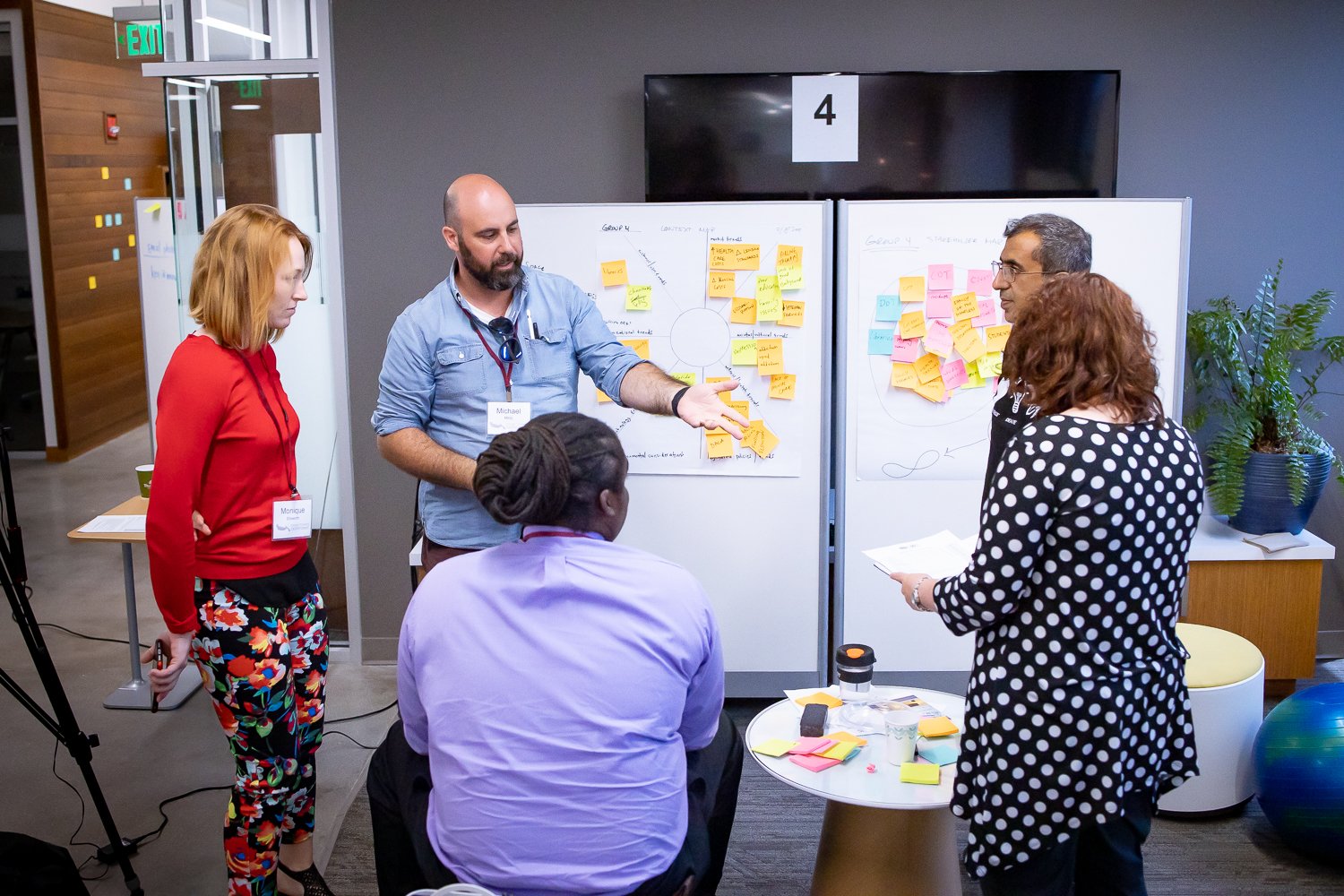
Scientific Innovation Strategies:
Design Sprint
Ideate
Reframe
Reframing exercise courtesy of Ken Baldauf, Director, FSU Innovation Hub.
Now that you've gained more empathy for and information about your Design Challenge, prior to ideation, it's important to reflect on your empathy work and reframe your How Might We (HMW) statement to more accurately represent the problem and provide a path to a successful solution.
HMW’s may be reframed to more specifically address:
a particular subset of the problem - ie. rather than seeking a more sustainable campus, you might seek to minimize the use of single use plastics.
a particular subset of stakeholders - ie. rather than seeking to reduce anxiety and depression in students, you might focus on assisting new students with avoiding anxiety and depression.
a particular environment or sub-organization - rather than assisting all students with career readiness, you might focus on business majors, or rather than improving study spaces across campus, you might focus on Strozier Library.
Instructions:
Team leaders should open the Design Challenge Miro Whiteboard and review what has been done so far with any new members. Fully explaining the Design Challenge.
Review the summary of the groupings of your final Sense-making Affinity Map and consider your top insights.
Have each team member compose a reframed HMW based on their most important insights. Using the below format. Share the HMW’s with the team.
Given that __________________________ (insight, need, pain, emotional state),
how might we help _____________________ (persona, target audience, user),
do/be/feel/achieve _____________________ (immediate goal, job to be done),
so they can ________________________ (deeper, broader emotional goal).
As a group, compose a final Team “How Might We” (HMW) statement based on those contributed by team members.
Compare this HMW statement to your original Design Statement. Make sure that your new statement has stayed true to your original (satisfying your original success factors), with perhaps more nuance and detail. If you’ve wanders astray make some edits to bring your HMW statement back in line.
Add your newly reframed HMW statement, along with your new team member list to your Google Doc or Miro Whiteboard.
IDEATION
“For our brainstorming sessions, and the rules are literally written on the walls: Defer judgment. Encourage wild ideas. Stay focused on the topic. The most important of them, I would argue, is "Build on the ideas of others.”
― Tim Brown, Change by Design: How Design Thinking Transforms Organizations and Inspires Innovation
Characteristics of an innovative, viable solution:
It has an aspect that is novel/new - no one has ever done it before
It is feasible to implement
It can be packaged as a product to sell (an invention, a service, an app, or a system)
You can identify the customer - who you will sell it to (not necessarily your primary stakeholder)
You can identify how it will be financially sustained
Forms of solutions:
a physical invention
(examples: a surgical device, an implant, a diagnostic test)
a service
(examples: a physical therapy session, a therapy session, a ride service)
an app
(examples: a scheduling app, an education app)
a system
(examples: a support group, a case coordination suite, an AI support tool)
a combination of the above
Brainstorming
Go for quantity. Ideation is about generating as many ideas as possible, pushing your creativity, and building off one another's ideas. Crazy is encouraged!
Don't Judge. Tap into everyone's creativity by being supportive. What seems unfeasible to you might be part of a great, disruptive concept. Don't shut people down. Instead respond with “yes! and…”
Your sticky note is your voice. Write ideas down with just a few words. Use sticky notes to record your ideas, even if someone else is talking, capture it, and share it!
Be Respectful. Ideation is energizing, and people can get excited. Make room for everyone, encourage introverts to share. Listen attentively and affirm understanding.
